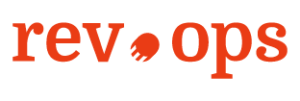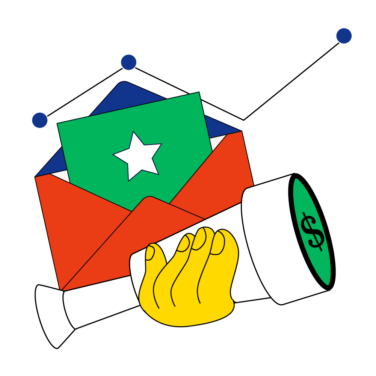Scaling a SaaS business is tough, no question about it. Beyond just fine-tuning strategies, you’re racing against time to shorten sales cycles and improve win rates—all while keeping growth targets in sight.
It’s a lot, and for many SaaS companies, the stakes couldn’t be higher. Getting it right can fuel exponential growth; getting it wrong can halt momentum entirely.
So, what works? That’s where B2B sales case studies become invaluable. They go beyond theory, showing exactly how real companies tackled challenges like yours and found strategies that delivered results.
In this article, we’ll break down three actionable case studies from SaaS businesses that faced common sales roadblocks and came out ahead. Plus, I'm sharing insights to help you move the needle. Let's go.
Why Your Sales Strategy Matters
After Series B, the pressure to grow your customer base, boost revenue, and establish a strong foothold in the market really kicks in. To make it happen, you need clear and effective B2B sales strategies.
Tactics like account-based selling and AI-driven lead prioritization help you focus on the customers that matter most, saving time and effort on low-potential opportunities. Sales enablement tools can also make a big difference by streamlining workflows and helping your team stay productive—turning conversations into closed deals faster and more efficiently.
For SaaS companies looking to hit ambitious growth targets, it’s all about aligning your sales strategies with processes that can scale. The earlier you lock in what works, the better your chances of building lasting success. Here's how a few companies made it happen.
Case Study 1: Leveraging Account-Based Selling to Drive Growth
Background
LiveRamp, a SaaS company specializing in data connectivity solutions, operates in the fiercely competitive marketing and advertising industry. At the time of this case study, LiveRamp was in its growth phase, targeting enterprise-level clients, particularly Fortune 500 companies. To expand its market share and strengthen its presence, LiveRamp needed an effective way to engage high-value accounts in a crowded and competitive space.
Challenge
LiveRamp's primary challenge was engaging Fortune 500 clients who required highly tailored solutions and were inundated with marketing and sales pitches. The company struggled to create cohesive messaging across sales and marketing efforts, which resulted in inefficient engagement and wasted resources.
With limited bandwidth, LiveRamp needed a strategy to focus on high-value accounts and maximize ROI while streamlining outreach efforts.
Solution
LiveRamp adopted an Account-Based Marketing (ABM) strategy to tackle these challenges. Using predictive analytics, the team identified their top 15 best-fit accounts. They concentrated on understanding each prospect’s unique needs and crafted a personalized, multichannel approach to reach them. The strategy included:
- Customized display ads
- Personalized email campaigns
- Direct mail outreach
- Multi-touch strategies from sales development representatives (SDRs)
By tightly coordinating sales and marketing efforts, LiveRamp ensured a consistent, tailored message for each account. They also implemented tools to track engagement and measure campaign success, enabling them to adjust tactics in real time.
Results
The ABM strategy delivered outstanding results. LiveRamp successfully engaged its high-value targets, generating over $50 million in annual revenue from the 15 targeted accounts.
LiveRamp generated over $50 million in annual revenue from the 15 targeted accounts.
The personalized and coordinated approach improved client engagement and maximized resource efficiency. In turn, this helped solidify LiveRamp’s reputation as a trusted partner in the enterprise marketing space.
Case Study 2: Implementing AI for Account Prioritization
Background
LinkedIn, the global leader in professional networking and B2B services, offers a broad range of solutions, including talent acquisition and marketing tools. As the company expanded its offerings, it faced a growing challenge: how to prioritize thousands of potential accounts to maximize sales opportunities efficiently.
LinkedIn needed a smarter, faster way to identify high-value prospects and optimize resource allocation for their sales teams.
Challenge
For LinkedIn’s sales representatives, account prioritization was a cumbersome process. They relied on intuition and fragmented data to decide where to focus their efforts. This led to inefficiencies—sales reps spent too much time sifting through data and not enough time engaging with clients. The lack of a systematic approach also resulted in missed opportunities and inconsistent interactions with high-potential accounts.
Solution
To solve this, LinkedIn developed a proprietary AI tool called Account Prioritizer. This innovative tool used machine learning models to analyze historical data, account behavior, and potential ROI. By automating the prioritization process, it helped sales teams zero in on high-impact accounts with minimal effort.
One standout feature of the tool was its explainable AI functionality, which provided clear, natural language explanations for why specific accounts were prioritized. Integrated into LinkedIn’s CRM, this feature built trust and drove adoption among the sales team. It also improved alignment across departments by providing transparent insights.
Results
The introduction of Account Prioritizer brought game-changing results. An A/B test revealed an 8.08% increase in renewal bookings, giving LinkedIn a significant revenue boost.
Sales reps spent less time analyzing data and more time connecting with top-priority accounts, leading to increased productivity and consistently better sales outcomes.
Case Study 3: Accelerating Sales Cycles with Sales Enablement Technology
Background
Proposify, a SaaS company specializing in proposal management software, helps businesses streamline their sales processes. As a growing mid-market company, Proposify was experiencing increasing demand but found itself held back by inefficiencies in its sales cycle.
While scaling operations, the team recognized the need for a solution to optimize workflows and close deals faster.
Challenge
Proposify’s sales cycle was taking too long, often stretching over several weeks from the initial client contact to deal closure. Sales representatives found themselves bogged down with time-consuming tasks, including responding to frequent client queries, managing bottlenecks in the buyer journey, and handling complex forecasting.
These inefficiencies not only delayed deal closures but also impacted revenue growth. To keep up with demand and grow effectively, Proposify needed a way to streamline and speed up their sales processes.
Solution
Proposify turned to Gong, a leading revenue intelligence platform, to tackle these challenges head-on. Gong provided powerful insights into sales interactions, allowing Proposify’s team to pinpoint bottlenecks in the buyer journey and fine-tune their approach to client engagement. With AI-driven analytics, the team was able to:
- Tailor sales pitches based on real-time data.
- Address client objections more effectively.
- Reduce the time spent on administrative tasks, such as forecasting.
By automating parts of the sales process and providing actionable insights, Gong allowed Proposify’s sales team to focus on what they do best—selling.
Results
The results were transformative. Proposify reduced its sales cycle length by 50%, cutting the average time to close deals in half. Close rates also improved significantly, rising from 23% to 30%, while the time spent on forecasting decreased by 25%.
Proposify cut its average time to close in half.
These improvements allowed Proposify to scale its operations and drive sustained revenue growth.
Key Takeaways from These B2B Sales Case Studies
1. Embrace Account-Based Selling for Targeted Growth
If you're serious about scaling targeted growth, ABS is where the magic happens. By zeroing in on high-value accounts, you’re not just playing the numbers game—you’re building meaningful, tailored connections that decision-makers actually care about.
The result? Deeper trust, stronger relationships, and a win rate you can brag about.
But here’s the kicker: ABS only works when sales and marketing are on the same wavelength. Think: synchronized messaging, custom content, and outreach strategies that hit the exact pain points of each account. Add predictive analytics and account segmentation to the mix, and you’ve got a laser-focused approach to identifying and closing your biggest opportunities.
2. Leverage AI for Intelligent Account Prioritization
The right AI-powered tools can sift through mountains of data—sales trends, account behavior, and ROI potential—to hand you a roadmap to high-value deals. No more chasing the wrong leads; AI ensures you focus your time and resources where they can achieve the greatest impact.
What’s even better? Explainable AI, which provides transparent and understandable insights into how decisions are made. This clarity encourages adoption and ensures teams feel confident relying on AI recommendations. The result? Higher productivity, fewer missed opportunities, faster deal closures, and improved renewal numbers.
3. Utilize Sales Enablement Technology to Accelerate Sales Cycles
If inefficiencies are slowing down your sales process, it’s time to step up with sales enablement tools.
Today, platforms like revenue intelligence software and AI-powered solutions are a must-have. They take care of repetitive tasks, speed up client responses, and provide insights that help your team focus on what really matters: closing deals.
Real-time analytics, for example, don’t just highlight bottlenecks—they help you fix them before they cause delays. And by freeing your reps from tedious tasks like forecasting and follow-ups, these tools let them concentrate on selling and building stronger client relationships.
The payoff? Shorter sales cycles, higher win rates, and a more efficient team. Plus, the added data visibility gives sales leaders the clarity they need to make smarter decisions that drive long-term growth.
Turn B2B Sales Case Studies Into Reality
Each strategy shared in the above B2B sales case studies offers actionable insights that can transform your sales efforts. Implement them to accelerate your organization's growth and achieve long-term success in today's constantly changing market.
Frequently Asked Questions About B2B Sales Strategies
What is the best B2B sales strategy for SaaS startups?
It depends on your audience and growth stage. Account-Based Selling (ABS) works great for high-value accounts, while inbound marketing attracts smaller businesses with content and automation. A mix of personalized outreach and scalable inbound tactics often delivers the best results.
How do I shorten the sales cycle in B2B SaaS sales?
To shorten the sales cycle, focus on qualifying leads early in the process and addressing objections upfront. Tools like Gong or HubSpot can streamline workflows with insights into buyer behavior and help optimize follow-ups. Additionally, clear and transparent communication at every stage helps build trust and accelerate decision-making.
What are the common mistakes in B2B SaaS sales strategies?
Common mistakes include targeting the wrong audience, relying too heavily on a one-size-fits-all approach, and failing to align sales and marketing efforts. Many SaaS companies also neglect the importance of continuous training for their sales teams or underutilize data analytics for decision-making. Fixing these can boost efficiency and results.
How can SaaS startups scale their B2B sales teams effectively?
Hire sales reps with relevant expertise and great communication skills. Provide solid training, use tools like CRMs and AI-driven analytics for consistency, and set clear KPIs. A strong onboarding process is key to scaling without losing quality.
Why is account-based selling important in B2B SaaS sales?
Account-based selling allows SaaS companies to focus their resources on high-value accounts, offering tailored solutions for specific needs. This targeted approach improves win rates, increases ROI, and fosters stronger client relationships. ABS is especially important in competitive markets where customer acquisition costs are high, and personalized engagement is crucial.


